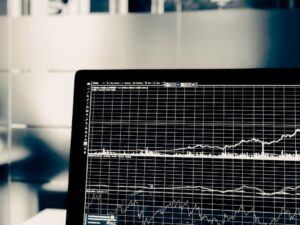In the world of forex trading, where every second counts, high-frequency trading has become increasingly popular among traders looking to capitalize on small price movements and generate quick profits. High-frequency trading (HFT) relies on the use of advanced tools and technologies to execute trades at lightning-fast speeds. In this article, we will explore the key tools and technologies that are essential for high-frequency forex trading.
1. Algorithmic Trading Software:
At the heart of high-frequency trading is algorithmic trading software. This software uses complex algorithms to analyze market data and execute trades automatically based on predefined rules and strategies. Algorithmic trading software allows traders to react to market conditions within milliseconds, eliminating the need for manual intervention. These programs can be customized to incorporate various indicators, patterns, and signals, enabling traders to implement their preferred trading strategies.
2. Co-location Services:
Co-location is a crucial component of high-frequency forex trading. Co-location services involve placing trading servers in close proximity to the servers of forex exchanges or liquidity providers. By reducing the physical distance between the trading server and the exchange’s server, co-location minimizes latency and improves execution speed. This is particularly important for high-frequency traders who need to execute trades in the shortest possible time frame.
3. Direct Market Access (DMA):
Direct market access (DMA) is a service provided by brokerages that allows traders to connect directly to liquidity providers or exchanges. DMA bypasses the traditional route of routing trades through a broker’s trading desk, resulting in lower latency and faster trade execution. High-frequency forex traders rely on DMA to ensure their trades are executed at the best available prices without delays caused by intermediaries.
4. Low-Latency Trading Infrastructure:
Low latency is a critical factor in high-frequency trading. Even a few milliseconds of delay can significantly impact trading outcomes. To achieve low-latency trading, traders need to invest in a robust infrastructure that includes high-speed internet connections, powerful servers, and reliable data feeds. Reducing latency requires the use of dedicated fiber optic connections, high-performance hardware, and cutting-edge networking technologies.
5. Colocation Hosting:
Colocation hosting refers to the practice of housing trading servers in data centers specifically designed for high-frequency trading. These data centers offer excellent connectivity, redundant power supply, and advanced cooling systems to ensure uninterrupted operation of trading servers. Colocation hosting providers often offer additional features like low-latency network connections, multiple internet service providers, and 24/7 technical support.
6. High-Frequency Trading Platforms:
High-frequency forex traders need trading platforms that can handle the demands of rapid trading. These platforms should provide real-time market data, advanced order types, and customizable interfaces. Additionally, they should support the integration of algorithmic trading strategies through APIs (Application Programming Interfaces). Popular trading platforms for high-frequency trading include MetaTrader 4 (MT4) and NinjaTrader.
7. Market Data Providers:
Accurate and reliable market data is crucial for high-frequency traders to make informed trading decisions. Market data providers deliver real-time quotes, order book data, and historical price data to traders. These providers often offer data feeds specifically designed for high-frequency trading, which are optimized for low latency and high-speed data transmission.
8. Risk Management Tools:
High-frequency trading involves executing a large number of trades in a short period. This rapid trading can expose traders to significant risks, including market volatility, system failures, and execution errors. Risk management tools are essential for high-frequency traders to monitor and control their exposure. These tools include stop-loss orders, position sizing calculators, and risk management modules integrated into trading platforms.
In conclusion, high-frequency forex trading requires a combination of advanced tools and technologies to execute trades at lightning-fast speeds. Algorithmic trading software, co-location services, direct market access, low-latency trading infrastructure, colocation hosting, high-frequency trading platforms, market data providers, and risk management tools are all essential components for successful high-frequency trading. Traders must carefully consider and invest in these tools and technologies to stay competitive in the fast-paced world of high-frequency forex trading.






